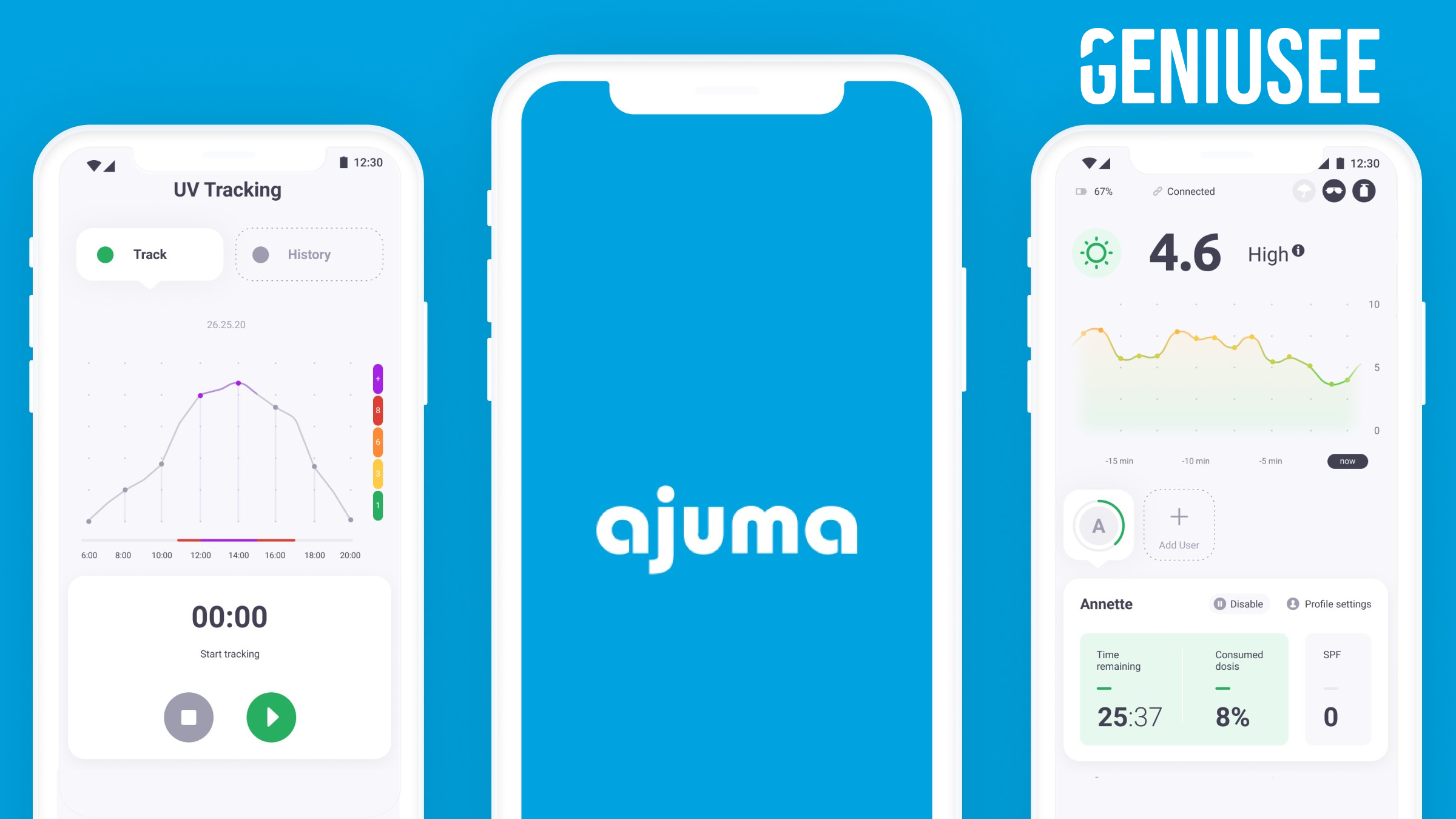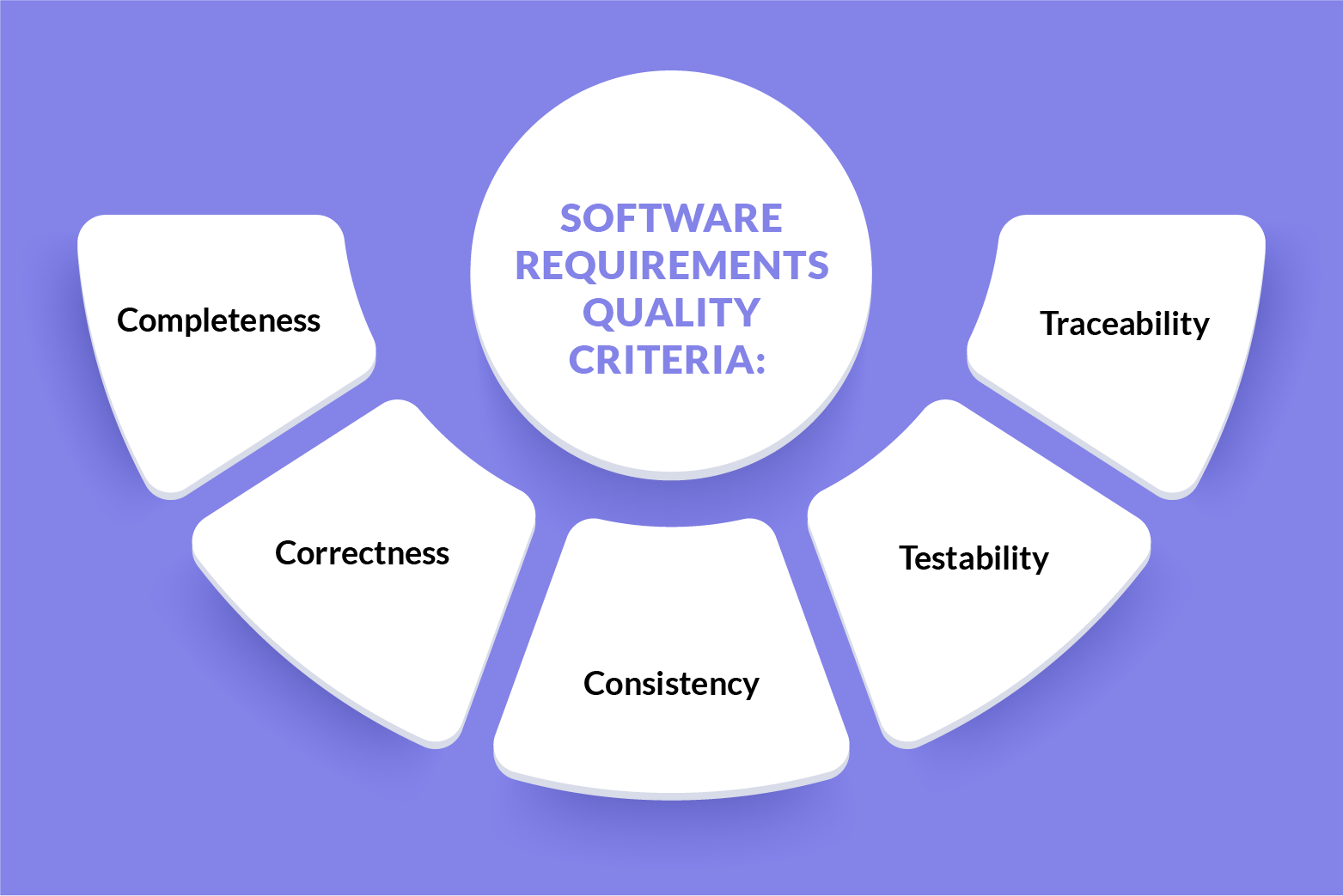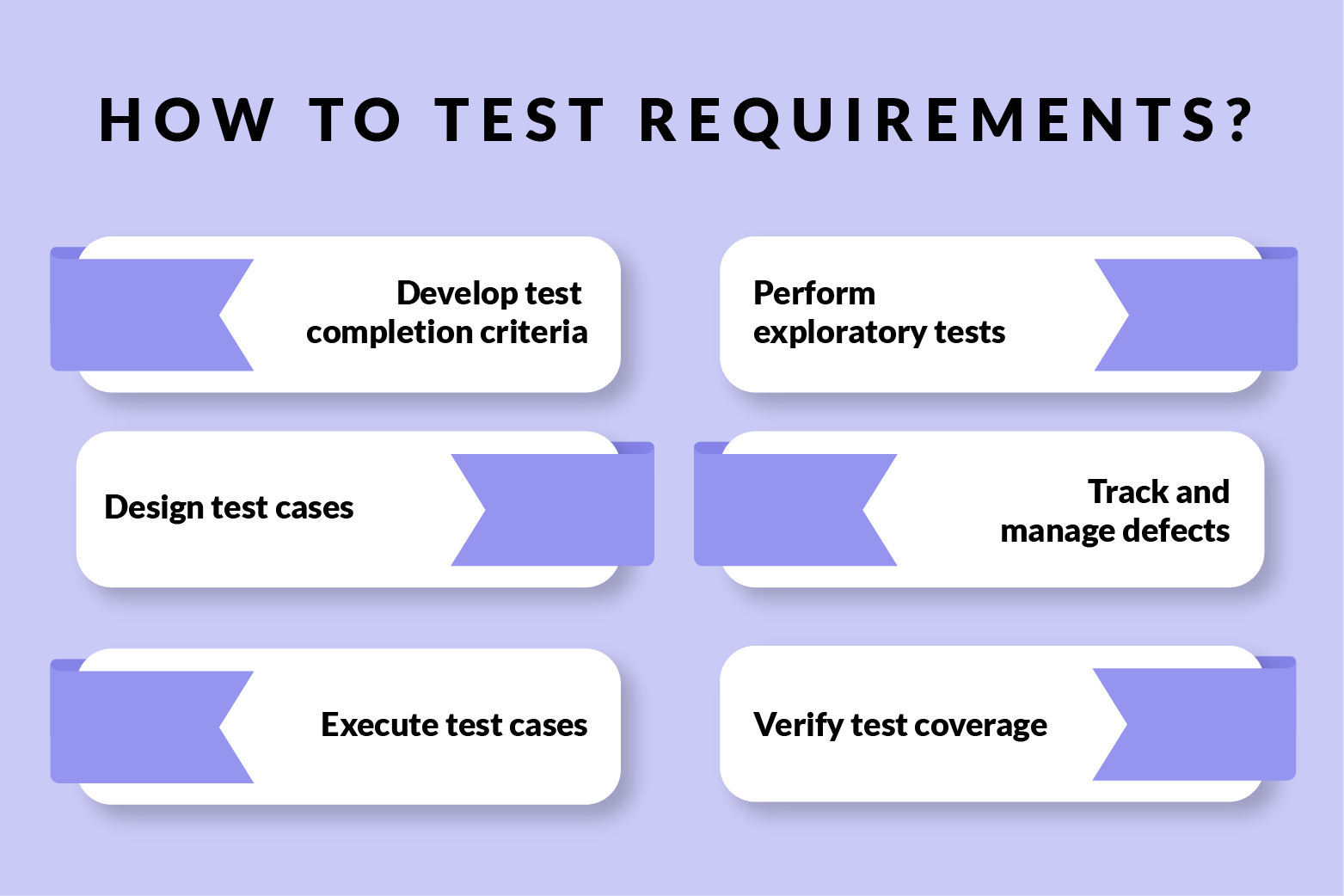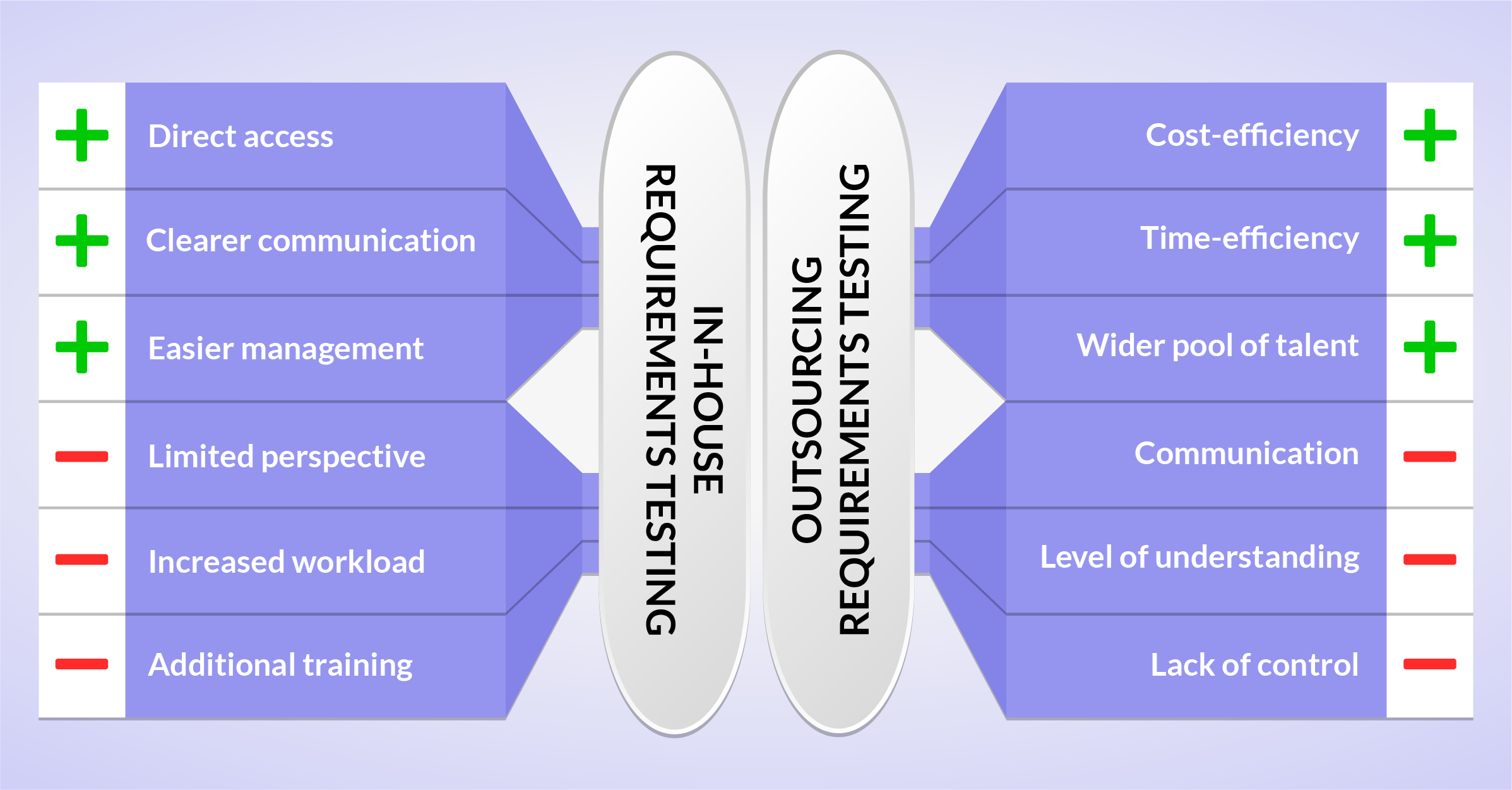In software development, requirements testing plays a crucial role in the whole life cycle, ensuring the final product meets the end-user's expectations and the project’s goal. Yet, despite understanding the importance of the matter, many executives struggle with how to conduct it effectively.
What exactly are the testing requirements? What do they include? What should good requirements look like? And how do you properly test requirements in your company?
Whether you are a C-level executive, project manager, or software engineer, this guide will provide you with essential guidance on the matter.
What Does Requirements Testing Mean?
Testing requirements is a quality assurance process that helps ensure a company’s software development requirements are complete, accurate, unambiguous, testable, and can be easily understood by all stakeholders (business analysts, product owners, project managers, developers, QA professionals, customers, and others).
- The main goal of the requirements testing process is to identify any defects or issues in the requirements at the earliest stage before they are implemented. This, in turn, reduces the likelihood of rework and helps eliminate risks connected with incorrect requirements, such as:
- Defects in the software
- Delays in delivery
- Increased costs
- Reputational damage
- Legal and compliance risks
So, well-tested and detailed requirements not only improve the software development process but eventually influence each and every part of the business process.
Types of Requirements
There are different types of requirements, but here are the main ones that should be taken into account in any software development project:
- Functional requirements that describe what the software is supposed to do, what features it should have, and how it should perform.
- Non-functional requirements that describe how the software should perform and how it should meet certain criteria such as usability, scalability, security, etc.


Thank you for Subscription!
They, in turn, may include:
- Business requirements that describe the overall goals and objectives of the software project and how it will help the business achieve its main project goal.
- User requirements that describe the needs and preferences of the end-users of the software.
- System requirements that describe the technical specifications the software must meet, including compatibility with various hardware interfaces, operating systems, databases, network protocols, and other requirements.
- User interface requirements that describe how the software should interact with its end users.
- Performance requirements that describe the expected performance of the software, such as response times and throughput.
- Quality requirements that describe the level of quality the software should meet, such as reliability, maintainability, and testability.
- Regulatory requirements and external standards that describe the legal and regulatory constraints the software must comply with, such as data privacy regulations or safety standards.
Now that we understand what project requirements are and their different types, let’s look at some of the characteristics and properties that will help you understand what good requirements should look like.

That's what we do!
Ajuma: UV Index App
See how our team provided mobile app development and QA/QC for Ajuma in our long-term partnership.
Take a lookProperties of Good Requirements
There are specific criteria that refer to any kind of requirements:
- Completeness — all the requirements are defined and nothing important is missed.
- Correctness — requirements accurately reflect the stakeholders' needs and expectations.
- Consistency — requirements are consistent across all stakeholders, documents, and other sources and don’t contain contradictions inside.
- Testability — requirements are testable, and test cases can be derived from them.
- Traceability — each requirement can be traced back to its origin, such as a stakeholder, business goal, or regulation.
If project requirements correspond to all of these criteria, they will help improve the whole application and its quality, increase the likelihood of project success, and improve its timings and costs.

How to Make Sure Your Project Requirements Will Meet All Quality Criteria
This includes three general stages—preparation, creation of the requirements, and performing the requirements-based tests you created. Let’s see how each can be done.
How to Properly Prepare
Here’s what you should do, ideally, before creating your requirements:
- Document the goals. Make sure all of your project goals, expectations, and requirements are not only clear and understood by all stakeholders but also properly documented.
- Involve all relevant stakeholders in the requirements gathering and testing processes to ensure all requirements are captured and understood without any discrepancies.
- Use external documentation. Your user manuals, design documents, and other specifications can be used as references to create and validate your requirements.
- Apply past data from your or similar projects to simplify the creation of requirements.
- Define the scope of the project and what is in and out of it. This will help you discover missing requirements or add unnecessary ones.
- Conduct research on similar projects, industry best practices, and user needs to gain insights into what requirements are necessary and how they should be structured.
How to Design Requirements
When your team is creating the project requirements, here’s what they should do during the design phase:
- Get input from all relevant stakeholders to ensure the requirements are complete and accurate.
- Write the requirements in clear and concise language that is easy to understand and doesn’t allow discrepancies.
- Define clear acceptance criteria that will be used to measure the success of the requirements.
- Use a consistent format for all requirements to ensure they are easy to understand and compare.
This will help you avoid many issues and software bugs in the next stage when you are ready to check requirements.
How to Test Your Requirements
After your requirements are ready, you’ll need to go through the requirements testing process to ensure they match your software’s standards and stakeholders’ expectations. This includes:
- Review the requirements. Start with requirements analysis to ensure they are complete, correct, consistent, testable, traceable, prioritized, and validated. Identify any potential issues or gaps in this early stage.
- Define test completion criteria based on the requirements, acceptance criteria, and other project-specific factors to ensure testing will be comprehensive and all requirements be validated.
- Design test cases based on the requirements and completion criteria.
- Execute test cases. Test requirements manually or using automation tools and document the results.
- Perform exploratory testing. Don’t limit your QA specialists to pre-designed test cases only. Let them perform an intelligent investigation of the software while simultaneously applying exploratory and heuristics testing approaches to the requirements.
- Track and manage defects throughout the quality assurance process to ensure every issue is addressed and resolved and the software will fully comply with every requirement before it’s released.
Next, your QA team should verify test coverage and perform requirement measurements to make sure all requirements have been tested.

Who Should Create Requirements for Your Product
Every stakeholder should partake in the requirements specification creation, but there should always be one person or team who will own the process, gather all the different requirements into an accumulated base, consistently formulate them, and make sure they are ready to be implemented.
Let’s consider different approaches with their benefits and disadvantages.
In-house Requirements Testing
Typically, under an in-house setup, a project manager, business analyst, or requirements engineer (or team) is responsible for creating requirements in a centralized way, and a QA team may execute tests.
On the one hand, it brings the following benefits:
- Direct access to subject matter experts within the company.
- Clearer communication channels as the team is working together.
- Easier management as every person is within the company structure and under direct reach.
On the other hand, it means:
- Limited perspective as team members may have the same background and experience, leading to a lack of diversity in ideas and approaches.
- Increased workload on the company's existing project management and QA teams.
- The necessity of additional training and development to ensure the team has the necessary skills and knowledge to effectively create and manage requirements.

Get more insights
How To Optimize The FinTech Software Release Management Process
Find out about the best practices for software release management to ensure a smooth and successful product launch.
Dive inOutsourcing Requirements Testing
Another popular approach is to outsource testing requirements in the same way, as many companies apply to software testing services.
This way of approaching requirements-based testing implies quite significant benefits to a business:
- Cost-efficiency, as the company only pays for the specific services and does not have to provide benefits or other costs associated with in-house employees.
- Time-efficiency. Outsourcing can be faster and more efficient than building an in-house team from scratch.
- Access to a wider pool of talent and expertise from outside the company with all their versatile experience and fresh perspectives.
But it also may have certain drawbacks:
- Communication can be more challenging, especially if the outsourced team is located in a different time zone or speaks a different language.
- The outsourced team may not have the same level of understanding of the company's business goals and needs.
- Lack of control over the outsourced team's work and priorities.
We at Geniusee eliminate these possible issues by:
- Our extensive successful experience working with companies from different countries and continents;
- Well-established communication and development processes with clear deadlines, priorities, and estimations;
- Regular planning and coordination sessions with flexible schedules.
As a result, we are always tightly aligned with our clients’ expectations and needs, and every development process remains transparent and controllable.
In this way, we have completed many QA testing and software development projects for companies in different domains, such as:
- Video Learning Platform for Finance Professionals where we performed the whole development and QA process with a high level of security and personalization.
- Custom Financial Index Investment Service where we assured incredibly fast data processing speeds, built a secure and trustworthy data transfer process, and performed the whole development and QA.
- E-learning platform where we collaborated with the client’s in-house intercultural teams across different time zones.

Conclusion
Creating and testing requirements is crucial for a successful development process of any software to ensure the software product meets the needs of stakeholders and is delivered on time and within budget.
This part of software quality assurance can be done in-house or through outsourcing, each with its own pros and cons. While the in-house option may seem appealing from a communication point of view, it may also require significant budgeting, team education, and an increased workload.

















